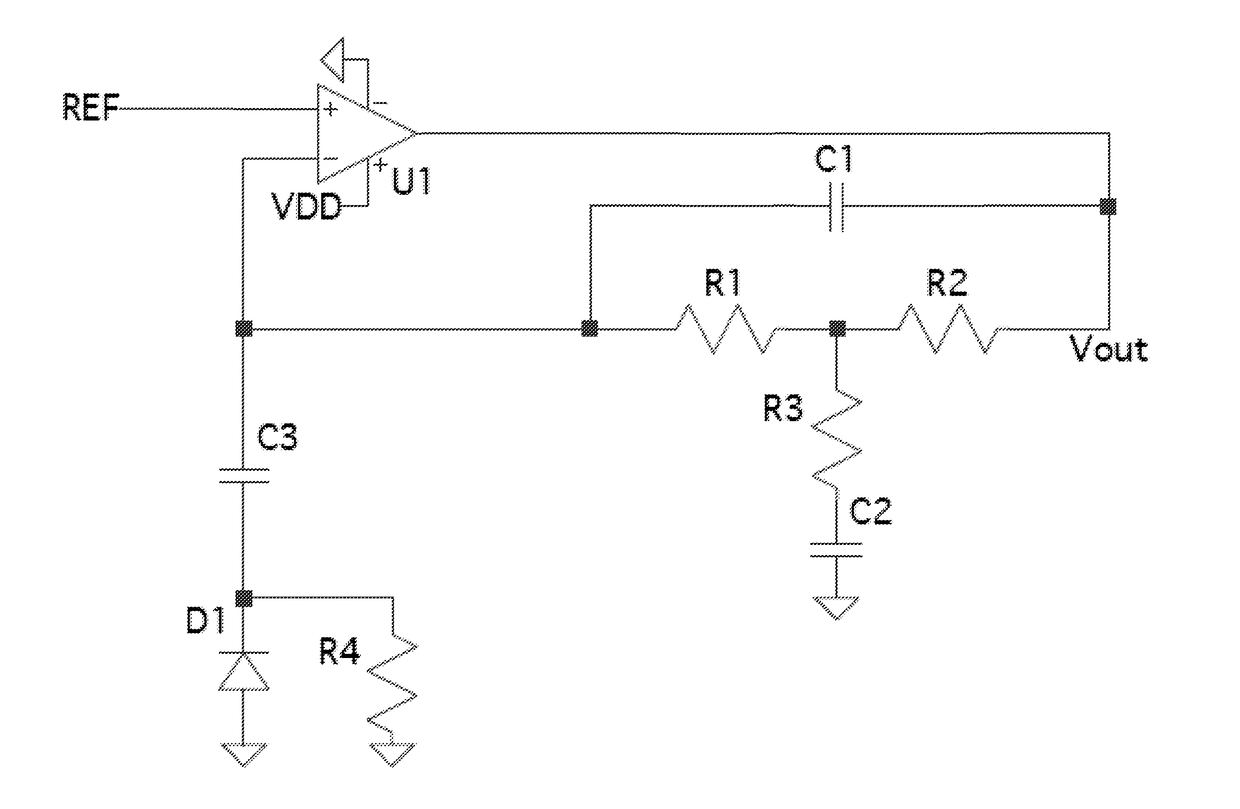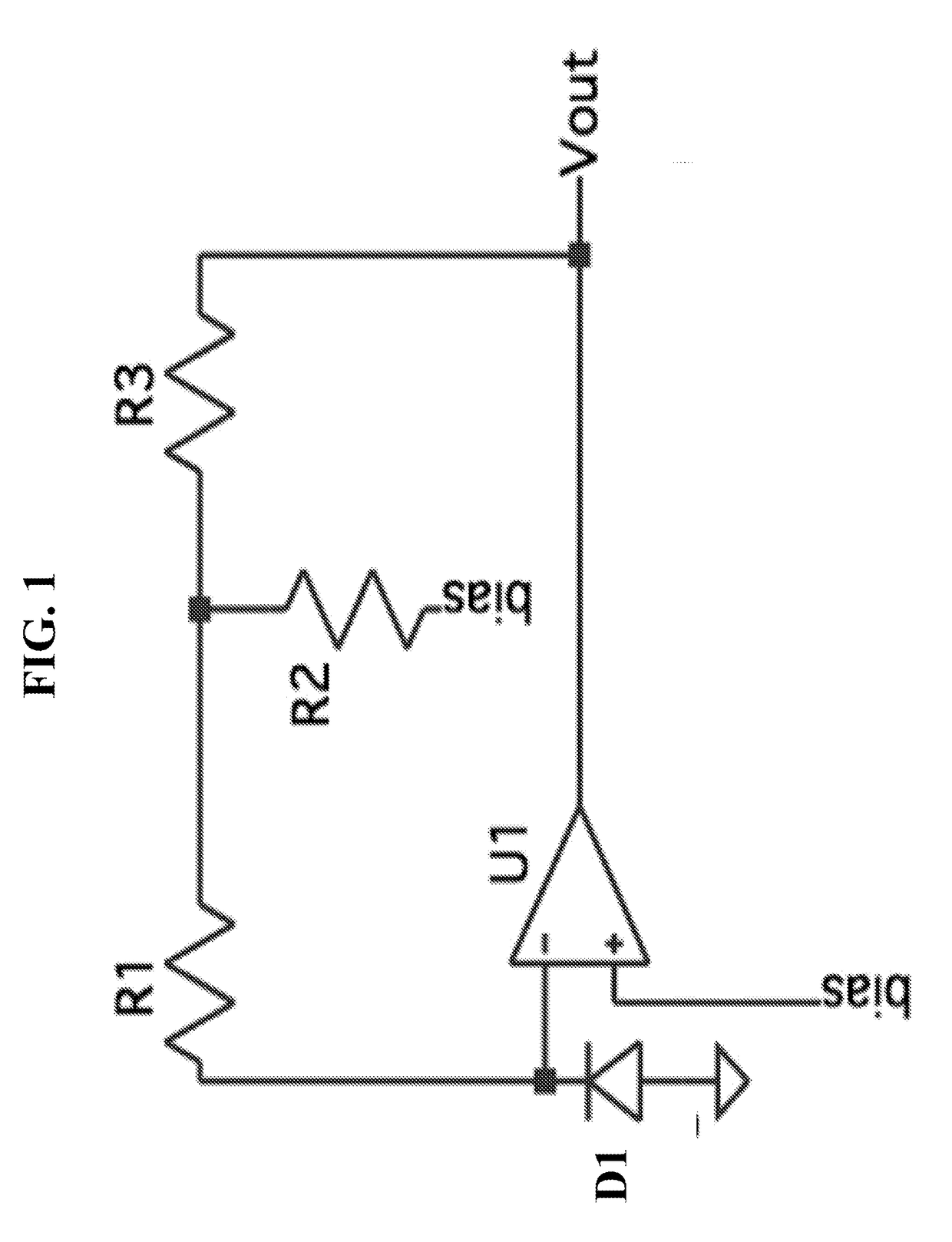Light sensor readout system and method of converting light into electrical signals
a light sensor and readout system technology, applied in the direction of amplifiers with semiconductor devices/discharge tubes, amplifier combinations, amplifier modifications to reduce noise influence, etc., can solve the problems of reducing the accuracy of current-to-voltage conversion, increasing the risk of common mode signals or noise, and enhancing the overall sensitivity. , to achieve the effect of enhancing signal detection
- Summary
- Abstract
- Description
- Claims
- Application Information
AI Technical Summary
Benefits of technology
Problems solved by technology
Method used
Image
Examples
Embodiment Construction
[0024]Embodiments of the disclosed subject matter provide systems and methods of converting light received by a sensor into electrical signals to be output. The received light may be visible light, IR light, and / or ultraviolet light. The systems may include resistors configured in a T-network that are coupled to a transimpedance amplifier to amplify the current from a sensor which converts received light into the current. The T-network configuration of resistors avoids the typical use of a single, high-valued resistor, which is often susceptible to temperature, humidity, and contamination, which degrades the accuracy of a conversion (e.g., current to voltage conversion). The embodiments of the disclosed subject matter avoid the use of an additional amplifier that is typically found in other related systems to raise the output signal above a predetermined noise floor. The systems of the disclosed subject matter may have increased suitability for high-volume manufacturing, as they are...
PUM
 Login to View More
Login to View More Abstract
Description
Claims
Application Information
 Login to View More
Login to View More - R&D
- Intellectual Property
- Life Sciences
- Materials
- Tech Scout
- Unparalleled Data Quality
- Higher Quality Content
- 60% Fewer Hallucinations
Browse by: Latest US Patents, China's latest patents, Technical Efficacy Thesaurus, Application Domain, Technology Topic, Popular Technical Reports.
© 2025 PatSnap. All rights reserved.Legal|Privacy policy|Modern Slavery Act Transparency Statement|Sitemap|About US| Contact US: help@patsnap.com



